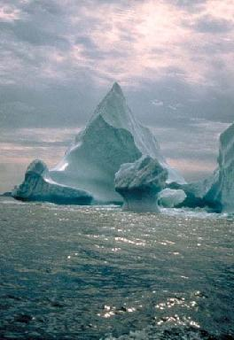NOAA/WDS Paleoclimatology - Juan de Fuca Ridge, Subarctic Pacific Productivity Proxy Data over the last 200,000 years
This archived Paleoclimatology Study is available from the NOAA National Centers for Environmental Information (NCEI), under the World Data Service (WDS) for Paleoclimatology. The associated NCEI study type is Paleoceanography. The data include parameters of paleoceanography with a geographic location of North Pacific Ocean. The time period coverage is from 495000 to 0 in calendar years before present (BP). See metadata information for parameter and study location details. Please cite this study when using the data.
- Cite as: Costa, K.; McManus, J.F.; Anderson, R.F. (2018-05-25): NOAA/WDS Paleoclimatology - Juan de Fuca Ridge, Subarctic Pacific Productivity Proxy Data over the last 200,000 years. [indicate subset used]. NOAA National Centers for Environmental Information. https://doi.org/10.25921/dwkk-dy65. Accessed [date].
- Please refer to Credit tab for full citation information.
- doi:10.25921/dwkk-dy65
- noaa-ocean-24190
- NCEI DSI 1200_02
- NCEI DSI 1200_01
noaa-ocean-24190
| Search Data |
|
| Download Data |
|
| Distribution Formats |
|
| Ordering Instructions | Contact NCEI for other distribution options and instructions. |
| Distributor | NOAA National Centers for Environmental Information
ncei.info@noaa.gov |
| Dataset Point of Contact | NOAA National Centers for Environmental Information
ncei.info@noaa.gov |
| Dataset Point of Contact | Data Center Contact
NOAA World Data Service for Paleoclimatology 828-271-4800 paleo@noaa.gov |
| Coverage Description | Date Range: 495000 cal yr BP to 0 cal yr BP; |
| Time Period | -493050 to 1950 |
| Spatial Bounding Box Coordinates |
N: 45.04507
S: 44.88717
E: -130.45737
W: -130.8785
|
| Spatial Coverage Map | |
| General Documentation |
|
| Associated Resources |
|
| Publication Dates |
|
| Data Presentation Form | Digital table - digital representation of facts or figures systematically displayed, especially in columns
|
| Dataset Progress Status | Complete - production of the data has been completed |
| Data Update Frequency | Data update frequency not available |
| Supplemental Information |
STUDY NOTES: Productivity proxies for the Subarctic Pacific for the last 200,000 years Provided Keywords: Productivity, stratification, glacial-interglacial variability
ABSTRACT SUPPLIED BY ORIGINATOR: In the Subarctic Pacific, variability in productivity on glacial-interglacial timescales is often attributed to changes in stratification and nutrient delivery to the surface, but the mechanisms driving this relationship are poorly constrained. Records extending beyond the last glacial maximum from both the open ocean and the marginal seas are required to investigate the timing and magnitude of different influential processes through the full glacial cycle. In this study we generated 231Pa/230Th over 210,000 years in order to capture two full glacial cycles of paleoproductivity on the Juan de Fuca Ridge in the East Subarctic Pacific. The sedimentary 231Pa/230Th ratios are always equal to or greater than the seawater production ratio (0.093), consistent with enhanced biological scavenging in this region. The temporal pattern of 231Pa/230Th burial is remarkably coherent with changes in climate, with high values (0.20) during peak interglacial periods descending to low values (0.10) during peak glacial conditions, consistent with other long productivity records from this region. We investigate the possible contributions of temperature, sea ice formation, Bering Strait closure, wind strength, upwelling, and subsurface nutrient concentrations as possible mechanisms by which physical and/or chemical stratification emerged during glacial periods. Due to the low sea surface salinity in the North Pacific, cooling actually weakens the density gradient in surface (0–200 m) waters. To create the steep density profiles that characterize physical stratification, additional processes to reduce the salinity of surface waters must occur during glacial periods. We suggest that regional sea ice formation and Bering Strait closure may have contributed to freshening surface waters and enhancing physical stratification during glacial periods. Additionally, simulated weak winds in this region due to the southward shift of the glacial westerlies may have further reduced surface mixing depths in the Subarctic Pacific. Finally, previous model simulations suggest strong glacial wind stress curl in the Subarctic Pacific, but enhanced Ekman divergence of nutrient-poor subsurface waters would have little impact on stimulating productivity in surface waters of the Subarctic Pacific. We therefore suggest that the combined effects of surface freshening, weak winds, and lower subsurface nutrient concentrations may all have contributed to lower productivity during glacial periods in the Subarctic Pacific. |
| Purpose | Records of past climate and ocean circulation derived from marine sediments. Parameter keywords describe what was measured in this dataset. Additional summary information can be found in the abstracts of papers listed in the dataset citations. |
| Dataset Citation |
|
| Cited Authors |
|
| Originators |
|
| Publishers |
|
| Theme keywords | Global Change Master Directory (GCMD) Science Keywords
|
| Data Center keywords | Global Change Master Directory (GCMD) Data Center Keywords
|
| Place keywords |
|
| Use Constraints |
|
| Access Constraints |
|
| Fees |
|
Last Modified: 2023-10-24
For questions about the information on this page, please email: ncei.info@noaa.gov
